Chimney Inspection
Chimney Inspection







Chimney Inspection
Schedule Your Professional Chimney Inspection Scan Today!
During our thorough inspections, we take a close look from the top of the chimney (where we inspect the chimney cap, chimney crown, flashing, and brickwork) all the way down the inside of the chimney to the fireplace (including the smoke chamber, damper, firebox, lintel, hearth and ash dump door).
According to the Chimney Safety Institute of America (CSIA), a non-profit institution dedicated to public and chimney professional education, virtually all chimney and fireplace fires are preventable. Both the CSIA and the NFPA recommend yearly chimney inspections to help prevent these hazards.
Inspections are now classified as Level 1, Level 2 or Level 3. Each level of inspection covers specific items depending on the individual appliance and venting system. Below is an explanation of the three levels of inspections and what services your chimney service technician should provide for each level.
- Level 1 Inspections: Level 1 inspections are typically conducted when no changes have been made to the system and the homeowner plans to continue using the system as it was used in the past. These inspections include a look at all accessible portions of the venting system, the appliance and connections. During these visual inspections, the technician will also check to see if the flue is blocked or if there is significant buildup affecting air flow or creating a fire hazard.
- Level 2 Inspections: Level 2 inspections are typically conducted when changes are made to a system, when a flue is being relined, when the property is changing hands, or when a system may have incurred damage. These inspections are a bit more intensive and involved than level 1 inspections. During a level 2 inspection, the technician will inspect all of the portions explored during a level 1 inspection, but will also inspect all accessible attics, basements and crawl spaces. We will check all accessible portions of the chimney’s interior and exterior and evaluate whether or not the flue liner is appropriately-sized and -constructed for the appliance. Additionally, we’ll check for proper clearance from combustibles and proper chimney condition and construction. Level 2 inspections also typically include a video scan, which allows for a detailed look at the interior of the flue.
- Level 3 Inspections: Level 3 inspections are incredibly involved and are typically only conducted when the hazard or problem cannot be identified or properly evaluated with a level 1 or level 2 inspection. These inspections may involve the removal of parts of the chimney or home in order to get to suspicious, otherwise-concealed areas.
GET IN TOUCH
Get Free Pricing
What clients say
Customers Reviews
They were extremely professional, polite, and did a phenomenal job installing our new roof! Would highly recommend them.
Great service on my roof repair. I called them when I saw I had a leak. They came and found out where it wad coming from and knew the solution for it. They fixed it the next day and price was reasonable. I would recommend them very much






